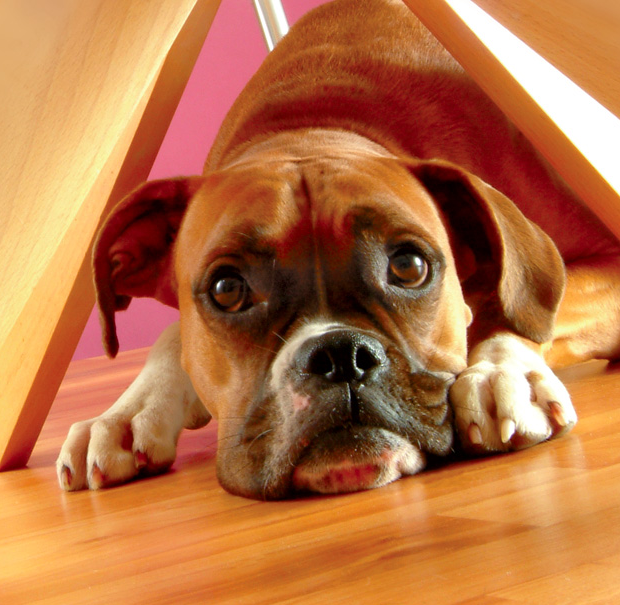News
Breathing problems in dogs and cats
by on May 30th, 2014
Category: News, Tags:
 Having trouble breathing is, at the very least, an uncomfortable experience, but can also be life-threatening if your pet is unable to take in enough oxygen to their lungs when breathing in, or to get rid of enough carbon dioxide from their lungs when breathing out.
Having trouble breathing is, at the very least, an uncomfortable experience, but can also be life-threatening if your pet is unable to take in enough oxygen to their lungs when breathing in, or to get rid of enough carbon dioxide from their lungs when breathing out.
What can cause difficulty breathing in cats and dogs?
There are lots of different causes of difficulty breathing but most of the time they are due to a problem which affects the airway or the lungs in some way. Some of the disorders which can occur in different parts of the respiratory tract are listed below.
Affected part of airway: nose, throat (pharynx), vocal cord area (larynx):-
- Brachycephalic airway obstruction syndrome is seen in dogs with short-noses such as Pugs and Bulldogs and includes a number of airway abnormalities present from birth. Increased risk on hot days, during exercise or stress
- Laryngeal paralysis – the vocal cords fail to move properly during breathing. Especially larger breed dogs (e.g. retrievers). Increased risk on hot days, during exercise
- Masses causing obstruction – may be cancerous but not always (e.g. nasopharyngeal polyps in cats)
Affected part of airway: windpipe (trachea):-
- Tracheal collapse – the windpipe flattens during breathing hindering airflow. Especially little dogs (e.g. Yorkshire terriers, Chihuahuas) who often have a characteristic cough (‘goose honk cough’); often gets worse when excited or stressed
- Tracheal foreign body e.g. bone or pebble stuck in windpipe
Affected part of airway: lungs:-
- Bruising (contusion) for example after a traumatic episode (e.g. cat hit by car)
- ‘Water on the lungs’ (pulmonary oedema) – especially due to heart failure
- Infection (pneumonia). Especially bacterial infections after inhaling stomach contents (aspiration pneumonia). Also lungworm – especially in dogs
- Cancer – may originate in the lungs or spread there from somewhere else in the body
- Allergy – especially feline asthma (allergic airway disease)
- Foreign body – e.g. inhaled grass awn or other plant material
Affected part of airway: chest cavity around lungs:-
- Build-up of air (pneumothorax) due to airway rupture, especially after a traumatic episode (e.g. cat hit by car)
- Build-up of fluid (pleural effusion) due to e.g. heart failure; infection (pyothorax); bleeding
- Diaphragm rupture – usally after trauma when organs such as the stomach or liver may move into chest
How will I know that my pet is having difficulty breathing?
It may well be obvious to you that your pet is struggling to breathe because you are used to seeing them breathing normally and will notice a change. In many cases there is an increase in both the rate and effort of breathing but one or other may occur. You may notice for example that there is more movement of their chest and tummy area or that there is flaring of the nostrils. Some of the most severely affected animals show ‘postural adaptations’ to help them move air (e.g. sitting upright rather than lying down, standing with their elbows out). In very severe cases, the gums may take on a bluish or purplish appearance rather than their normal salmon pink colour. This is referred to as ‘cyanosis’ and should prompt immediate veterinary attention.
What will my vet do to help my pet?
Your vet may want to approach the management of your pet in a slow and steady fashion, taking their time to do the various necessary tests and treatments rather than risking stressing your pet.
More severe cases receive oxygen therapy and sometimes various drugs straight away to try and make them more stable for further tests and treatments. It may also be necessary, for example, to remove air or fluid from around the lungs using a needle (thoracocentesis). Commonly performed tests include ultrasonography and taking x-rays, and an ECG may be done in some cases where heart failure is suspected to see whether the heart is beating with a normal rhythm. In some cases an endoscope (like a tiny video camera) is passed into the airway under a general anaesthetic and other tests that may be performed include analysing your pet’s faeces and taking blood tests.
Depending on the diagnosis, your pet may need to be on medications, sometimes for the rest of his or her life, or they may need an operation. Their exercise may need to be restricted, sometimes just for a while but sometimes also more long-term. Unfortunately in some cases the cause of the difficulty breathing is one that has a very poor outlook. As there are many reasons why your pet may be having difficulty breathing, it is not possible to be too specific here and you should consult your vet if you are at all worried about your pet’s breathing.
If you are worried about your pet’s breathing you must consult your veterinary practice immediately. Dogs and especially cats that are struggling to breathe are in a very vulnerable position and it is very important to try and stress them as little as possible or they may deteriorate.
You can leave a response, or trackback from your own site.

